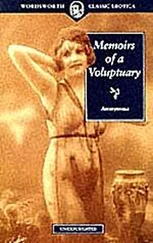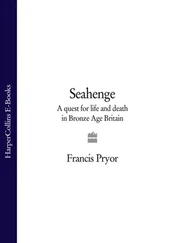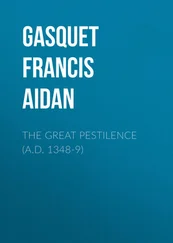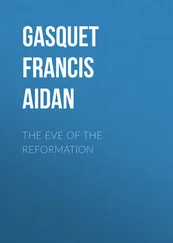Francis Gasquet - English Monastic Life
Здесь есть возможность читать онлайн «Francis Gasquet - English Monastic Life» — ознакомительный отрывок электронной книги совершенно бесплатно, а после прочтения отрывка купить полную версию. В некоторых случаях можно слушать аудио, скачать через торрент в формате fb2 и присутствует краткое содержание. Жанр: foreign_religion, foreign_antique, foreign_prose, на английском языке. Описание произведения, (предисловие) а так же отзывы посетителей доступны на портале библиотеки ЛибКат.
- Название:English Monastic Life
- Автор:
- Жанр:
- Год:неизвестен
- ISBN:нет данных
- Рейтинг книги:5 / 5. Голосов: 1
-
Избранное:Добавить в избранное
- Отзывы:
-
Ваша оценка:
- 100
- 1
- 2
- 3
- 4
- 5
English Monastic Life: краткое содержание, описание и аннотация
Предлагаем к чтению аннотацию, описание, краткое содержание или предисловие (зависит от того, что написал сам автор книги «English Monastic Life»). Если вы не нашли необходимую информацию о книге — напишите в комментариях, мы постараемся отыскать её.
English Monastic Life — читать онлайн ознакомительный отрывок
Ниже представлен текст книги, разбитый по страницам. Система сохранения места последней прочитанной страницы, позволяет с удобством читать онлайн бесплатно книгу «English Monastic Life», без необходимости каждый раз заново искать на чём Вы остановились. Поставьте закладку, и сможете в любой момент перейти на страницу, на которой закончили чтение.
Интервал:
Закладка:
In addition to this St. Benedict broke with the past in another and not less important way, and in one which, if rightly considered and acted upon, more than compensated for the mitigation of corporal austerities introduced into his rule of life. The strong note of individualism characteristic of Egyptian monachism, which gave rise to what Dom Butler calls the “rivalry in ascetical achievement,” gave place in St. Benedict’s code to the common practices of the community, and to the entire submission of the individual will, even in matters of personal austerity and mortification, to the judgment of the superior.
“This two-fold break with the past, in the elimination of austerity and in the sinking of the individual in the community, made St. Benedict’s Rule less a development than a revolution in monachism. It may be almost called a new creation; and it was destined to prove, as the subsequent history shows, peculiarly adapted to the new races that were peopling Western Europe.” 7 7 Ibid. , p. 256.
We are now in a position to turn to England. When, less than half a century after St. Benedict’s death, St. Augustine and his fellow monks in A.D. 597 first brought this Rule of Life to our country, a system of monasticism had been long established in the land. It was Celtic in its immediate origin; but whether it had been imported originally from Egypt or the East generally, or whether, as some recent scholars have thought, it was a natural and spontaneous growth, is extremely doubtful. The method of life pursued by the Celtic monks and the austerities practised by them bear a singular resemblance to the main features of Egyptian monachism; so close, indeed, is this likeness that it is hard to believe there could have been no connection between them. One characteristic feature of Celtic monasticism, on the other hand, appears to be unique and to divide it off from every other type. The Celtic monasteries included among their officials one, and in some cases many bishops. At the head was the abbot, and the episcopal office was held by members of the house subordinate to him. In certain monasteries the number of bishops was so numerous as to suggest that they must have really occupied the position of priests at the subordinate churches. Thus St. Columba went in A.D. 590 from Iona to a synod at Drumcheatt, accompanied by as many as twenty bishops; and in some of the Irish ecclesiastical meetings the bishops, as in the case of some of the African synods, could be counted by hundreds. This Celtic system appears to be without parallel in other parts of the Christian Church, and scholars have suggested that it was a purely indigenous growth. One writer, Mr. Willis Bund, is of the opinion that the origin was tribal and that the first “monasteries” were mere settlements of Christians – clergy and laity, men, women, and children – who for the sake of protection lived together. It was at some subsequent date that a division was made between the male and female portions of the settlement, and later still the eremitical idea was grafted on the already existing system. If the tribal settlement was the origin of the Celtic monastery, it affords some explanation of the position occupied by the bishops as subjects of the abbots. The latter were in the first instance the chiefs or governors of the settlements, which would include the bishop or bishops of the churches comprised in the settlement. By degrees, according to the theory advanced, the head received a recognised ecclesiastical position as abbot, the bishop still continuing to occupy a subordinate position, although there is evidence in the lives of the early Irish saints to show that the holder of the office was certainly treated with special dignity and honour.
The Celtic monastic system was apparently in vogue among the remnant of the ancient British Church in Wales and the West Country on the coming of St. Augustine. Little is known with certainty, but as the British Church was Celtic in origin it may be presumed that the Celtic type of monachism prevailed amongst the Christians in this country after the Saxon conquest. Whether it followed the distinctive practice of Irish monasticism in regard to the position of the abbot and the subject bishops may perhaps be doubted, as this does not appear to have been the practice of the Celtic Church of Gaul, with which there was a close early connection.
It has usually been supposed that the Rule of St. Columbanus represented the normal life of a Celtic monastery, but it has been lately shown that, so far as regards the Irish or Welsh houses, this Rule was never taken as a guide. It had its origin apparently in the fact that the Celtic monks on the Continent were induced, almost in spite of themselves, to adopt a mitigated rule of life by their close contact with Latin monasticism, which was then organising itself on the lines of the Rule of St. Benedict. 8 8 The Celtic Church of Wales , J. J. Willis Bund, p. 166.
The Columban Rule was a code of great rigour, and “would, if carried out in its entirety, have made the Celtic monks almost, if not quite, the most austere of men.” Even if it was not actually in use, the Rule of St. Columbanus may safely be taken to indicate the tendencies of Celtic monasticism generally, and the impracticable nature of much of the legislation and the hard spirit which characterises it goes far to explain how it came to pass that whenever it was brought face to face with the wider, milder, and more flexible code of St. Benedict, invariably, sooner or later, it gave place to it. In some monasteries, for a time, the two Rules seem to have been combined, or at least to have existed side by side, as at Luxeuil and Bobbio, in Italy, in the seventh century; but when the abbot of the former monastery was called upon to defend the Celtic rule, at the Synod of Macon in A.D. 625, the Columban code may be said to have ceased to exist anywhere as a separate rule of life.
For the present purpose it will be sufficient to consider English monasticism from the coming of St. Augustine at the close of the sixth century as Benedictine. There was, it is true, a brief period when in Northumberland the Celtic form of regular observance established itself at Lindisfarne and elsewhere. This was due to the direct appeal made by King Edwy of Northumbria to the monks of Iona to come into Northumbria, and continue in the North the work of St. Paulinus, which had been interrupted by the incursions of Penda. Iona, the foundation and home of St. Columba, was a large monastic and missionary centre regulated according to the true type of Celtic monachism under the abbatial superior; and from Iona came St. Aidan and the other Celtic apostles of the northern parts. In one point, so far as the evidence exists for forming any judgment at all, the new foundation of Lindisfarne differed from the parent house at Iona. At the Northumbrian monastery the bishop was the head and took the place of the abbot, and did not occupy the subordinate position held by the bishops at Iona and its dependencies.
CHAPTER II
THE MATERIAL PARTS OF A MONASTERY
1. THE CHURCH
In any account of the parts of a monastic establishment the church obviously finds the first place. As St. Benedict laid down the principle that “nothing is to be preferred to the Opus Dei ,” or Divine Service, so in every well-regulated religious establishment the church must of necessity be the very centre of the regular life as being, in fact no less than in word, the “House of God.”
In northern climates the church was situated, as a rule, upon the northern side of the monastic buildings. With its high and massive walls it afforded to those who lived there a good shelter from the rough north winds. As the northern cloister usually stretched along the nave wall of the church and terminated at the south transept, the buildings of the choir and presbytery and also the retro-chapels, if there were any, gave some protection from the east wind. Sometimes, of course, there were exceptions, caused by the natural lie of the ground or other reason, which did not allow of the church being placed in the ordinary English position. Canterbury itself and Chester are examples of this, the church being in each case on the southern side, where also it is found very frequently in warm and sunny climates, with the obvious intention of obtaining from its high walls some shelter from the excessive heat of the sun. Convenience, therefore, and not any very recondite symbolism, may be considered to have usually dictated the position of “God’s house.”
Читать дальшеИнтервал:
Закладка:
Похожие книги на «English Monastic Life»
Представляем Вашему вниманию похожие книги на «English Monastic Life» списком для выбора. Мы отобрали схожую по названию и смыслу литературу в надежде предоставить читателям больше вариантов отыскать новые, интересные, ещё непрочитанные произведения.
Обсуждение, отзывы о книге «English Monastic Life» и просто собственные мнения читателей. Оставьте ваши комментарии, напишите, что Вы думаете о произведении, его смысле или главных героях. Укажите что конкретно понравилось, а что нет, и почему Вы так считаете.












